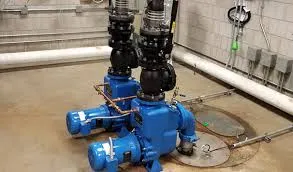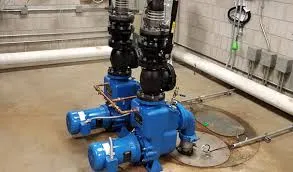Kurdish
- Afrikaans
- Albanian
- Amharic
- Arabic
- Armenian
- Azerbaijani
- Basque
- Belarusian
- Bengali
- Bosnian
- Bulgarian
- Catalan
- Cebuano
- Corsican
- Croatian
- Czech
- Danish
- Dutch
- English
- Esperanto
- Estonian
- Finnish
- French
- Frisian
- Galician
- Georgian
- German
- Greek
- Gujarati
- Haitian Creole
- hausa
- hawaiian
- Hebrew
- Hindi
- Miao
- Hungarian
- Icelandic
- igbo
- Indonesian
- irish
- Italian
- Japanese
- Javanese
- Kannada
- kazakh
- Khmer
- Rwandese
- Korean
- Kurdish
- Kyrgyz
- Lao
- Latin
- Latvian
- Lithuanian
- Luxembourgish
- Macedonian
- Malgashi
- Malay
- Malayalam
- Maltese
- Maori
- Marathi
- Mongolian
- Myanmar
- Nepali
- Norwegian
- Norwegian
- Occitan
- Pashto
- Persian
- Polish
- Portuguese
- Punjabi
- Romanian
- Russian
- Samoan
- Scottish Gaelic
- Serbian
- Sesotho
- Shona
- Sindhi
- Sinhala
- Slovak
- Slovenian
- Somali
- Spanish
- Sundanese
- Swahili
- Swedish
- Tagalog
- Tajik
- Tamil
- Tatar
- Telugu
- Thai
- Turkish
- Turkmen
- Ukrainian
- Urdu
- Uighur
- Uzbek
- Vietnamese
- Welsh
- Bantu
- Yiddish
- Yoruba
- Zulu
Telephone: +86 13120555503
Email: frank@cypump.com
تەموز . 08, 2025 08:53 Back to list
High-Efficiency Submersible Effluent Pump for Sewage & Wastewater Solutions
- Introduction to Submersible Effluent Pump Technology
- Key Technical Advantages and Market Data
- Comparison Among Leading Manufacturers
- Custom Solutions and Tailored Designs
- Case Studies: Real-world Applications
- Choosing Between Sump Pump and Effluent Pump
- Conclusion: The Value of Submersible Effluent Pumps

(submersible effluent pump)
Introduction to Submersible Effluent Pump Technology
Submersible effluent pump systems stand at the forefront of wastewater management, offering efficient, low-maintenance solutions that have become essential across residential, commercial, and industrial sectors. These advanced pumps are engineered to handle greywater and semi-solid liquids with a level of reliability that sets them apart from standard dewatering or sump pumps. The evolution of the submersible effluent sewage pump category reflects both a response to stricter environmental regulations and soaring demand for systems that can manage higher volumes and variable effluent conditions. In today's water infrastructure, discerning the correct application, sizing, and integration of these pumps is critical for operational efficiency and environmental compliance.
Engineered for underwater operation, submersible effluent pump
s eliminate the risk of priming failures and maximize energy transfer. Their sealed motor design ensures long-lasting performance, often exceeding 10 years of continuous duty in demanding environments. As the foundation for decentralized wastewater treatment, irrigation, and flood mitigation, understanding the technical landscape of effluent pumps is crucial for designers, operators, and facility managers alike.
Key Technical Advantages and Market Data
Modern submersible effluent pump technologies offer a suite of technical benefits that distinguish them from similar solutions. These include minimal vibration, no cavitation risk, and higher hydraulic efficiency—critical factors across the wastewater sector. Typical effluent pumps support solids handling of up to ¾ inch and flow rates of 15–120 gallons per minute (GPM), with heads ranging from 10 to 70 feet. Such versatility accommodates a broad spectrum of installation environments, from septic tanks in rural developments to municipal lift stations.
Recent market research reveals that the global submersible pump market is projected to surpass $20 billion by 2027, fueled by urbanization and mounting concern over water pollution. Within this market, effluent and sewage pump segments are experiencing a compounded annual growth rate (CAGR) of nearly 5.2%. Operators seeking reduced OPEX are favoring models with thermal protection, anti-clog impellers, and corrosion-resistant housings. A report by the Water Environment Federation notes that facilities with modernized effluent pumps realize up to 30% energy savings compared to legacy sump pumps, alongside considerably lower maintenance intervals.
Comparison Among Leading Manufacturers
Not all submersible effluent pumps are created equal—the market features a spectrum from basic residential models to industrial-grade solutions with IoT diagnostics. Below is a 2024 comparison of leading manufacturers and select product lines, focusing on key performance indicators:
| Brand | Model | Max Flow (GPM) | Max Head (ft) | Solids Handling (inch) | Motor Power (HP) | Warranty (years) | Feature Highlights |
|---|---|---|---|---|---|---|---|
| Zoeller | 267 Series | 128 | 31 | 0.75 | 0.5 | 3 | Casted iron construction, thermal overload protection |
| Liberty Pumps | LE Series | 120 | 38 | 0.75 | 0.5–1.0 | 3 | Quick-disconnect cord, corrosion-resistant fasteners |
| Goulds | WE0311H | 80 | 28 | 0.5 | 0.3 | 2 | High-efficiency hydraulics, dual seals |
| Little Giant | 9EN Series | 80 | 30 | 0.5 | 0.4 | 2 | Energy efficient, integrated float switch |
This comparative overview underscores the importance of selecting a pump with not only adequate hydraulic performance but also industry-specific features such as enhanced motor protection, robust wet-end materials, and maintenance-friendly designs. Liberty and Zoeller, for example, have captured significant market share in North America with specialized solutions tailored for effluent management and adaptability to variable wastewater compositions.
Custom Solutions and Tailored Designs
Standardized products do not always address the complex realities of effluent management. Increasingly, customers are seeking custom-engineered submersible effluent sewage pump systems that align precisely with local regulatory requirements, projected load profiles, and unique installation footprints.
Leading OEMs and system integrators now offer design-to-order services, encompassing variable speed drives for dynamic flow control, sensor/telemetry integration for predictive maintenance, and modular impeller assemblies for enhanced debris passage. The integration of submersible effluent pump units into smart monitoring environments enables remote diagnostics, further optimizing performance and reducing downtime costs. In particular, configurations with duplex and triplex controls have become the default for high-uptime installations.
While initial costs can be 10–20% higher for custom systems, lifecycle cost analyses reveal reduced unplanned shutdowns and maintenance outlays. Facilities prioritizing resilience and regulatory alignment are increasingly embracing tailored pump packages, often supported by on-site commissioning and comprehensive after-sales support agreements.
Case Studies: Real-world Applications
The versatility of submersible effluent pumps is best illustrated through real-world deployments. In 2023, a university research campus in Wisconsin retrofitted its legacy lift stations with high-efficiency effluent pumps, resulting in a reduction in energy use by 22% annually and eliminating overflows during peak rainfall events. This transition also enabled compliance with new phosphorus discharge limits set by the EPA.
Elsewhere, a private residential community in Texas adopted duplex effluent pump systems for decentralized wastewater collection. After the first year of operation, the operator reported a 34% drop in emergency maintenance calls. Data collected via SCADA indicated average runtime per cycle improved by 18% over previous sump pump-based solutions, largely due to superior solids handling and automated self-cleaning impellers.
These implementations demonstrate the measurable benefits of using dedicated effluent pumps over less specialized alternatives—benefits that include improved service continuity, reduced environmental impact, and compliance with evolving discharge standards.
Choosing Between Sump Pump and Effluent Pump
The debate between sump pump vs effluent pump is a critical decision point in facility design and home improvement projects. While both pumps are submersible and designed for liquid transfer, they differ significantly in terms of use case and technical capabilities. Sump pumps are typically employed for clear water removal from basements and crawl spaces, engineered for low solids and minimal head. In contrast, effluent pumps are designed to handle the semi-solid content found in greywater from septic and sewage systems.
Performance tests show that effluent pumps manage solids up to 0.75 inches without clogging—a specification rarely matched by standard sump pumps. Additionally, effluent pumps often incorporate sealed, thermally protected motors capable of sustained operation. These factors make them an indispensable choice for those addressing anything beyond minor groundwater intrusion. Choosing incorrectly can lead to premature failure, service outages, and costly repairs, particularly in applications with high organic load or intermittent surges.
Conclusion: The Value of Submersible Effluent Pumps
The evolution of submersible effluent pump technology has redefined standards for reliability, energy efficiency, and long-term cost savings in wastewater management. Analyzing technical data, leading manufacturer offerings, and tailored solution strategies provides critical context for selecting the optimal pump for any application—whether residential, commercial, or industrial.
Through advanced engineering, robust feature sets, and real-world validation, submersible effluent pumps continue to deliver superior performance over alternatives. Their adaptability to emerging environmental standards and integration with smart control platforms positions them at the heart of next-generation water infrastructure. For operators, specifiers, and facility managers, investing in quality effluent pump solutions translates to operational peace of mind, regulatory compliance, and measurable bottom-line benefits.

(submersible effluent pump)
FAQS on submersible effluent pump
Q: What is a submersible effluent pump?
A: A submersible effluent pump is a type of pump designed to move treated wastewater, known as effluent, from septic tanks or similar systems. It is fully submerged in the liquid it is pumping. Its main purpose is to efficiently transfer relatively clear liquid containing small solids.Q: How does a submersible effluent sewage pump differ from a standard effluent pump?
A: While both pumps handle liquid waste, a submersible effluent sewage pump is built to move both liquid and solid sewage materials, including larger particles. Standard effluent pumps are typically used for relatively clear water with minimal solids. Therefore, sewage pumps are designed for heavier-duty applications.Q: What’s the difference between a sump pump and an effluent pump?
A: Sump pumps are used to remove accumulated water from basements or crawlspaces, mainly to prevent flooding. Effluent pumps, however, are designed to move wastewater containing small amounts of solids from septic tanks or treatment systems. The key difference is in the type of liquid each pump is designed to handle.Q: When should I use a submersible effluent pump instead of a sump pump?
A: You should use a submersible effluent pump when you need to move treated wastewater containing small solids from septic systems or dosing tanks. Sump pumps are best for clear groundwater removal. Choose the effluent pump for applications involving wastewater with minor solids content.Q: Can a submersible effluent sewage pump handle solids?
A: Yes, a submersible effluent sewage pump is designed to handle solids and suspended matter found in sewage. It is built with impellers that can pass larger particles without clogging. This makes it suitable for both effluent and raw sewage applications.-
Efficient Horizontal Split Case Pumps - Double Suction Performance
NewsAug.21,2025
-
Durable Flue Gas Desulfurization Pump | Vertical Chemical Pump
NewsAug.19,2025
-
ISG Series Vertical Pipeline Pump - Chi Yuan Pumps | High Efficiency, Energy Saving
NewsAug.18,2025
-
pipeline pump-Chi Yuan Pumps Co., LTD.|High Efficiency,Low Noise
NewsAug.18,2025
-
ISG Series Vertical Pipeline Pump - Chi Yuan Pumps | High Efficiency, Low Noise
NewsAug.18,2025
-
ISG Series Vertical Pipeline Pump-Chi Yuan Pumps Co., LTD.|Energy Efficiency&Durability
NewsAug.18,2025







